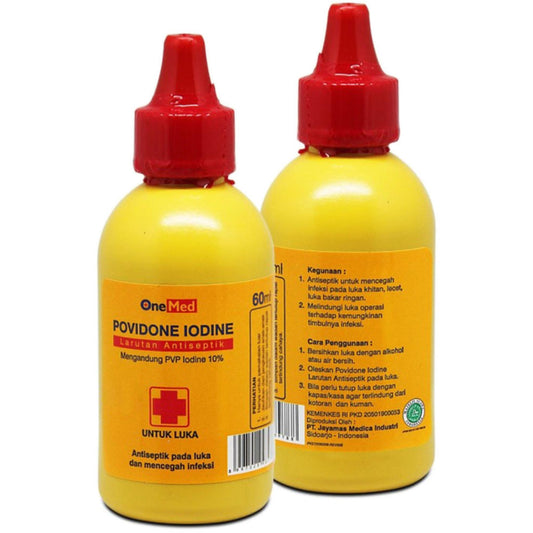
Are You or a Loved One at Risk? Learn About Muscular Dystrophy from Symptoms to Treatment!
Ever heard of muscular dystrophy? This condition causes muscles to weaken and physical function to decrease over time. Dystrophy can appear since infancy, childhood, or develop later in life. Each type of dystrophy has different symptoms and treatments, and the severity depends on the type experienced. So let's get to know it better so you are better prepared to face it!
Get to Know the Various Types of Muscle Weakness and Their Symptoms
Muscle weakness or muscular dystrophy comes in many forms and can worsen over time. Here are some of the most common types of muscular dystrophy and their characteristics:
- Duchenne Muscular Dystrophy
This dystrophy often appears in boys aged 2 to 6 years and is characterized by muscle weakness in the arms and legs. This type is the most common and accounts for 50% of recorded cases of muscle weakness. - Becker Muscular Dystrophy
Similar to Duchenne, but develops more slowly. It usually appears as you get older, namely in adolescence or early adulthood, and is characterized by gradual muscle weakness.
In addition to the two most common types of dystrophy, here are some other types of dystrophy that you should also know about:
- Congenital Muscular Dystrophy : Occurs at birth or sometime afterward and affects the entire body.
- Distal Muscular Dystrophy : Affects the muscles in the wrists, hands, and calves.
- Emery Dreifuss Muscular Dystrophy : muscle weakness caused by muscle wasting in the upper arms and legs.
- Facioscapulohumeral Muscular Dystrophy : Affects the muscles of the face, shoulder blades, and upper arms.
- Muscular Limb Girdle Dystrophy : Occurs in the hip and shoulder areas, disrupting body mobility.
- Myotonic Muscular Dystrophy : Muscle weakness that affects the eye muscles and organ systems and not only weakens the muscles, but also affects other organs such as the heart and digestive tract.
- Oculopharyngeal Muscular Dystrophy : Affects the muscles in the eye and mouth area, affecting basic functions such as swallowing.

Symptoms and Causes of Muscular Dystrophy You Need to Know
Symptoms of muscular dystrophy can vary widely, depending on the type. However, the most common signs are muscle weakness and other muscle function problems that get worse over time. Each type of dystrophy can affect different parts of the body and muscles. Here are some common symptoms:
- Muscles become smaller and weaker
- Difficulty walking, climbing stairs, or running
- Unsteady gait
- Stiffness or looseness in the joints
- Spasticity and muscle pain
- Excessive fatigue
- Difficulty swallowing
- Heart problems, such as arrhythmia or heart failure
- Scoliosis and breathing problems
- Learning disabilities or intellectual disabilities
Some symptoms appear gradually and are mild at first, but progress and worsen with age. Others may cause muscle weakness and physical disability more quickly.
What Causes Muscular Dystrophy?
Muscular dystrophy is caused by genetic mutations that damage the structure and function of muscles. The genes that are supposed to keep muscles strong are altered, causing the muscles to slowly lose their ability to function properly. Because this dystrophy is a genetic condition, lifestyle factors cannot influence the risk of developing this condition.
However, conditions such as low body weight, poor lung function, and high levels of protein in the blood can worsen the condition and increase the risk of heart complications, including heart failure. These factors can also lead to premature death if not managed properly. 
Muscular Dystrophy Treatment: Focus on Quality of Life
Until now, there has been no cure that can truly cure muscular dystrophy. However, various treatments can help relieve symptoms and improve the quality of life of sufferers. This type of treatment is usually adjusted to the type of dystrophy experienced. Here are some methods that are often used:
- Physical Therapy : This therapy aims to strengthen and stretch muscles so that movement function is maintained.
- Surgery : In some cases, surgery is needed to reduce muscle tension or treat scoliosis.
- Mobility Aids : Using canes, rollators, walkers, and wheelchairs helps improve mobility and prevent the risk of falls.
In addition, there are also special treatments such as cardiac and respiratory therapy and the use of corticosteroids to support lung function, prevent scoliosis, and prolong life expectancy. Mobility aids are often an important solution for sufferers to continue their daily activities more freely.
Therefore, for those of you who need assistive devices such as rollators, walkers, canes, or wheelchairs, all are available and can be purchased directly or online at The Kingdom Shop . We provide 100% original health equipment with fast and safe shipping. Find the health products you need only at The Kingdom Shop and enjoy a trusted online shopping experience!














